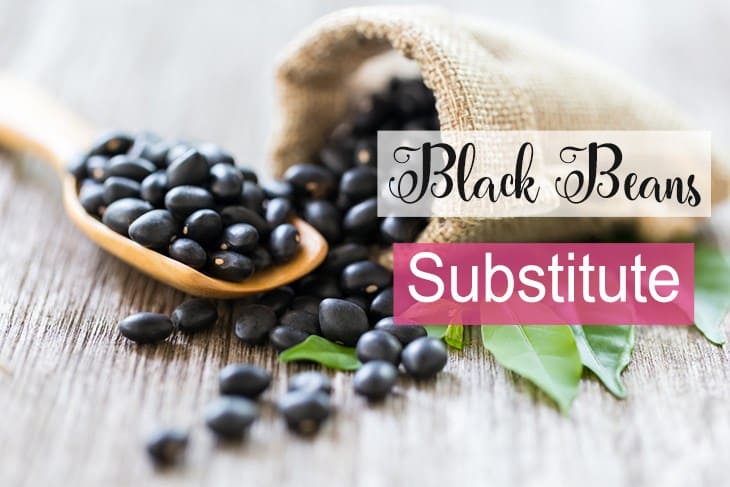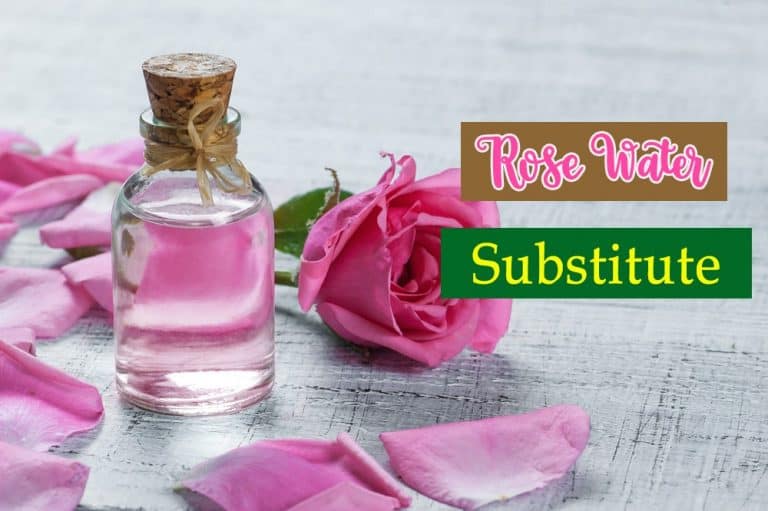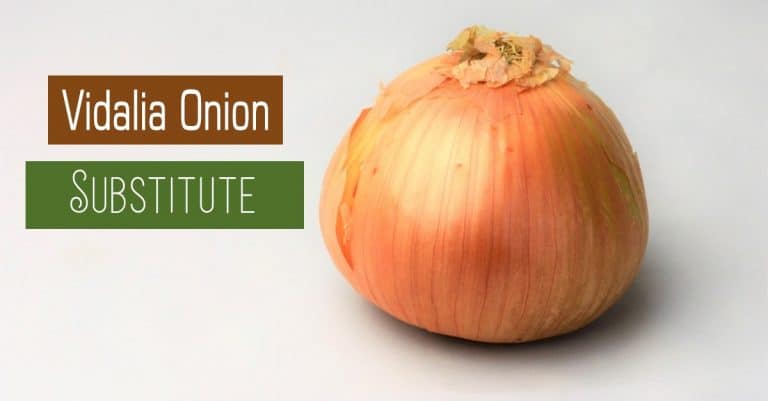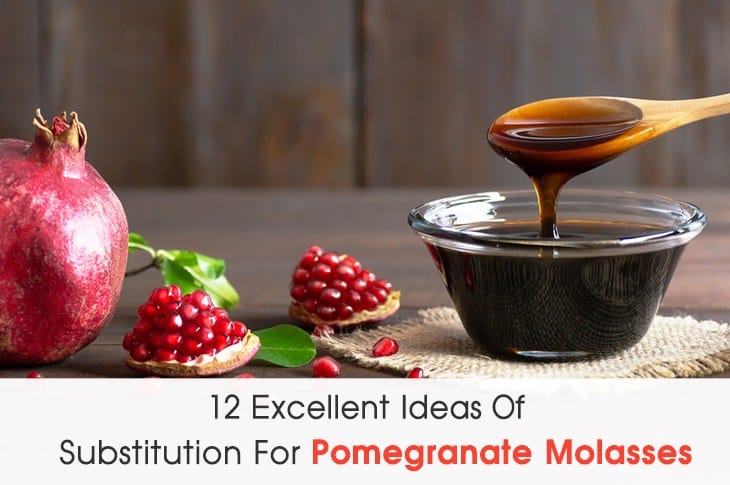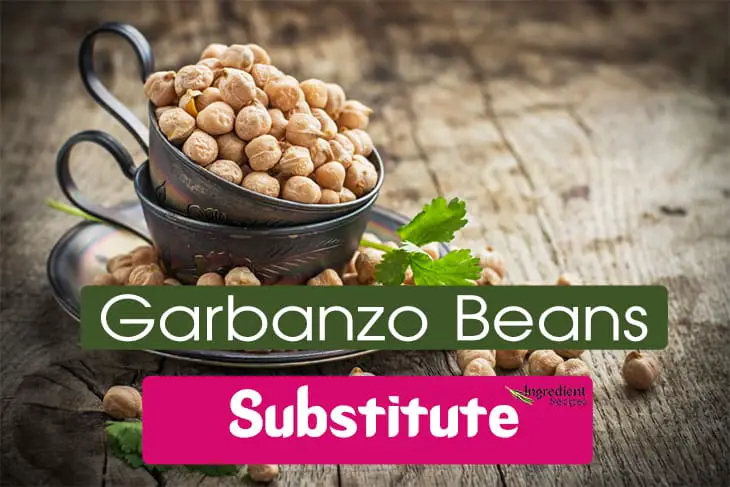
There is nothing better than chickpeas, aka garbanzo beans, to serve as a vegetable protein supply for your body. However, sometimes it’s necessary to find a substitute for garbanzo beans. None of us, after all, can be sure that there always is a can of chickpea in reach.
An absolute substitute in terms of texture and taste simply does not exist. However, each of the following replacements can do the job under specific circumstances.
12 Best Substitute For Garbanzo Beans
1. Green Pea
The Pisum sativum seed is arguably the most familiar ingredient on this list and also the oldest. Originated from the Near East and the Mediterranean basin, its earliest archaeological trace dates back to the late Neolithic age.
There is also evidence proving that this pea existed during the circa 4800 BC time range in Egypt’s Nile delta area. It has remained relatively unchanged through the millennia, with a green pod encompassing the seeds.
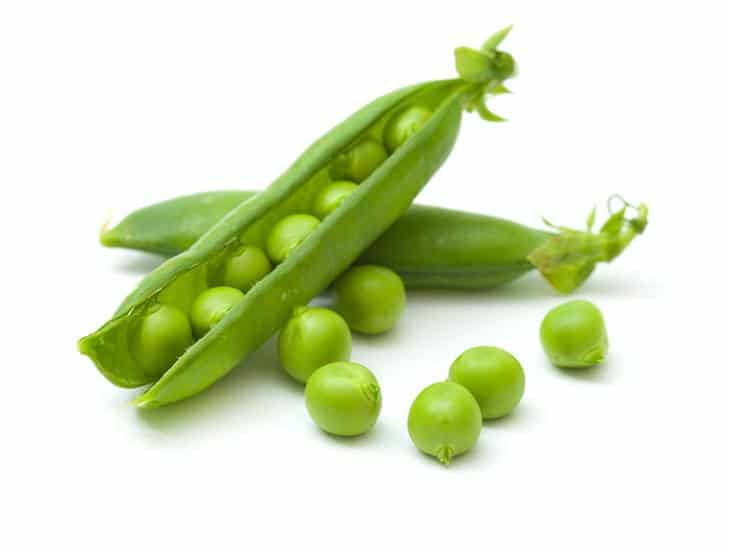
This pod is typically 3 to 4 inches long, compressed with a cylindrical shape tapered at each end. There usually are about 7 to 9 seeds, which is the edible part, within each pod. These seeds share the same consistency as the chickpeas.
For this reason, we believe that they are the best substitution for garbanzo beans in fish or meat dishes. The flavor of the meat will mask the difference in taste between the two types of peas.
Green pea is the source of a bunch of phytonutrients. One of them, coumestrol, is highly effective in preventing the development of stomach cancer. The recommendation is to consume at least 2 milligrams of this phytonutrient each day, while 1 cup of green pea offers 10 milligrams.
Read also: Pigeon Peas Substitute – Preservation Of Nutrition And Taste
2. Black Beans
A shiny and small variation of the common bean, the black bean is an especially popular ingredient in Latin America. You can also call it turtle bean due to its resemblance to the turtle eggs. Despite being originally a specialty of the Americas, black bean is now available worldwide.
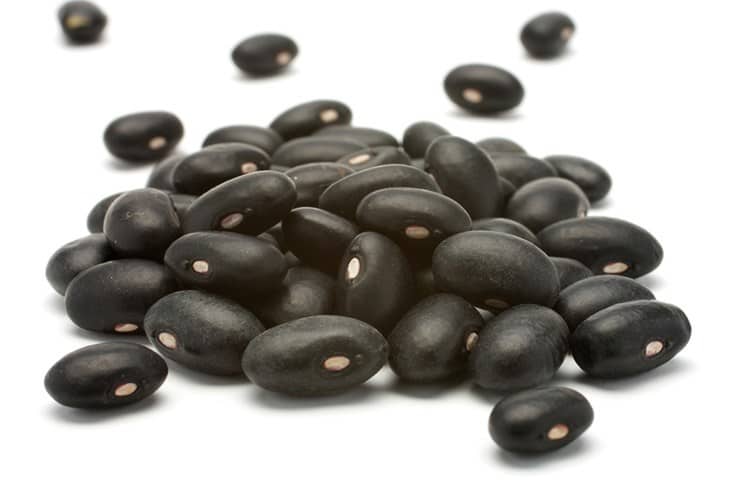
Black bean has a uniquely dense and meaty texture, making it a perfect ingredient for many vegetarian recipes. From feijoada to frijoles negros, you can find its trace in some of the most famous South American dishes.
The consensus on the taste of black beans is that it has an earthy and mildly sweet flavor. Their texture is generally as smooth as the chickpeas. As a result, they can easily replace chickpeas in dishes like salsas and soups.
The only difference that you will notice is your dish becoming a little bit sweeter. You can solve this issue by adding in some cumin.
Black beans are rich sources of phosphorus, manganese, copper, calcium, zinc, etc. Of them, phosphorus and calcium will improve your bone structure, while zinc will maintain its elasticity and strength.
3. Cannellini Beans
A variation of the kidney bean, this type of bean hails from Italy and has been seeing an increase in its popularity. As you can easily guess, this bean type looks fairly similar to the human kidney. The only difference is that it has a white-ish color with square ends, and it’s only 1/2 inch long.
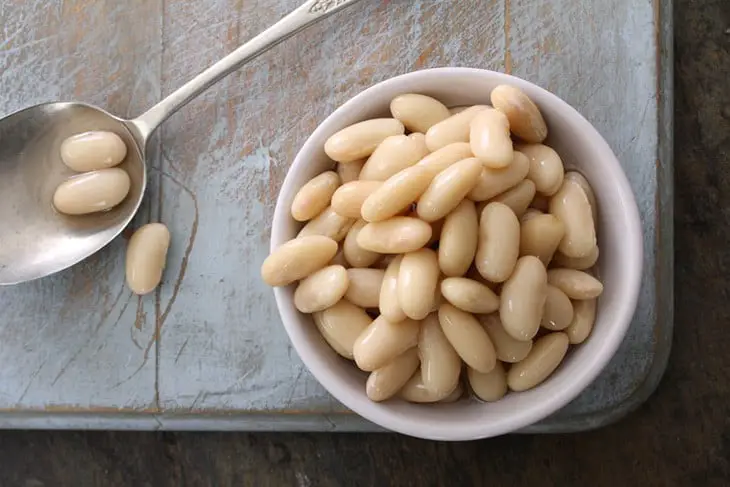
People who have eaten cannellini beans before describe them as being much meatier than Great Northern or Navy beans. The specific flavor after they are cooked completely is earthy and nutty. They are also well-known for their capability to retain the texture as well as shape under high heat.
Thanks to this characteristic, they can easily replace chickpeas in various recipes like stews and soups. No matter how long you cook them, they will not lose shape, preserving a beautiful look for your stew.
The earthy and nutty flavor is passable, but it’s best that you can pair them with chicken or fish. They can also be used as a substitute for black beans.
A special trait of cannellini beans is that they are fat-free, so you will never worry about putting on fat. Instead, you will get lots of magnesium, iron, folate, and fiber. This kind of diet is quite good for the maintenance of your blood pressure level.
4. Lentils
Being one of the rare edible seeds from the infamous family of Legumes, it’s only natural that green Lentils is popular. Yet, aside from the lens shape and some traditional recipes, most people practically have no clue about these beans. A prime example is that they don’t know there are many types of lentils.
The main way to categorize these types is by looking at their color. The brown ones are the lentils we are all familiar with, having that signature earthy flavor. They can replace chickpeas in soups and stews as their shape-holding capability is almost the same.
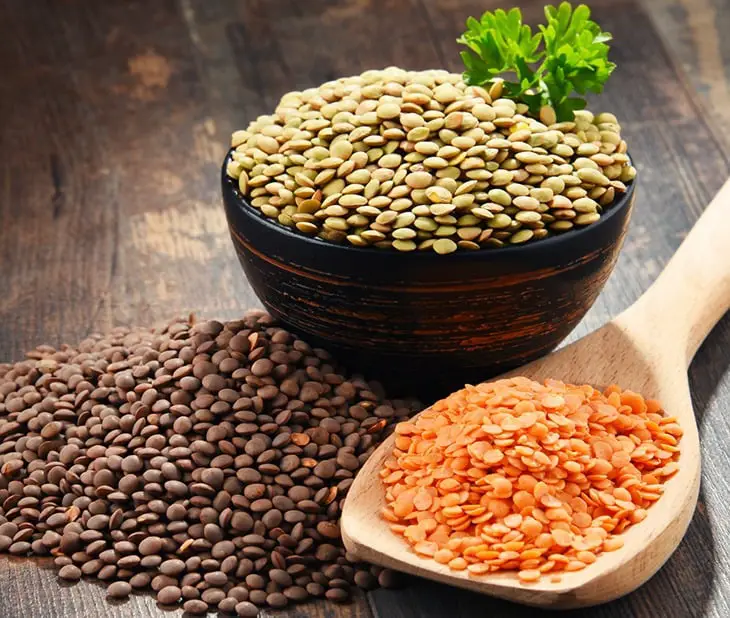
The Puy is the yellow-brown lentil, and its size is typically only 1/3 of a brown lentil. These Le Puy specialties have a distinct peppery taste, allowing them to replace chickpeas and elevate dishes like curries. You do need to be careful about the ratio between the lentils and pepper, though.
All kinds of lentils, especially black lentils, share one similarity in their huge proportion of vitamin B. As such, eating them regularly can improve your brain function, energy level, as well as cell metabolism. Daily vitamin B intake also prevents infection due to the cells being stronger.
5. Soybeans
Soybeans, or soya beans, have been an essential kitchen ingredient in the East for thousands upon thousands of years. There is evidence showing that it was domesticated by ancient Chinese circa 7000 BC. Then, its usage spread to other East Asian countries, namely Japan and Korea.

Some people in the West may not know about it, but they surely have heard of its alternative form, the tofu. It is not at all an overstatement to call this type of bean the most important bean economically. After all, it is a reliable source of vegetable proteins for millions of people.
You can only use these beans as a replacement for ground chickpeas in slow-cooking dishes. The reason for this limitation is the fact that you need to pressure-cook the beans for a while to soften them. Once they are soft, however, you will experience true bliss with each bite.
Soybean is a special case where a moderate consumption rate will help you reduce the risk of getting cardiovascular diseases. However, you should be careful, as it has isoflavone, an estrogen-like compound. Overconsumption of this compound means a higher chance of cancer.
6. Mung Beans
Also known as munggo, monggo, maash, and green gram, mung bean is a specialty of East and South Asia. At first, it originated from India and then spread across Southeast Asia as well as China. It is not that common in the U.S., but you can find some mung beans in health food stores.
The pods of mung bean stretch to 3 inches long with 10-15 seeds inside. These seeds have a mainly green color, with a white stripe in the middle.
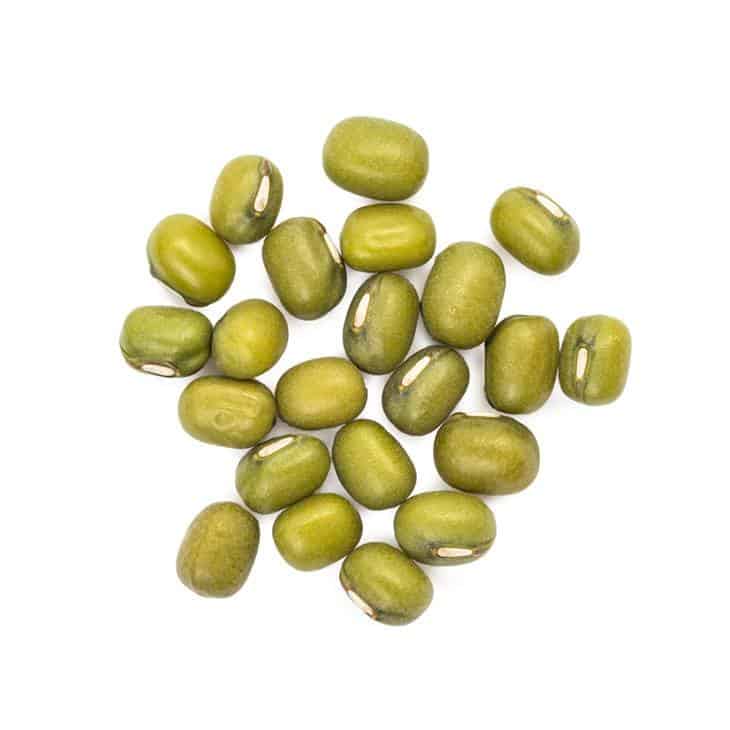
Mung beans have a slightly sweet flavor, which some people can find a little bit bland. Nevertheless, this lack of unique flavor can be a strong advantage if you intend to use them as a substitute for garbanzo beans. In fact, it can replace a variety of beans, not just chickpea.
All you need to do is pick meals that require garbanzo beans, but they should not be the main attraction. For instance, you can use mung beans instead of garbanzo for dhal or curries. The spices will overshadow the difference between the two ingredients.
There is quite a high concentration of antioxidants like cinnamic acids, phenolic acids, flavonoids, caffeic acids, etc., in these beans. These antioxidants are good for the neutralization of free radicals, a type of harmful molecules destroying cellular components.
7. Peanuts
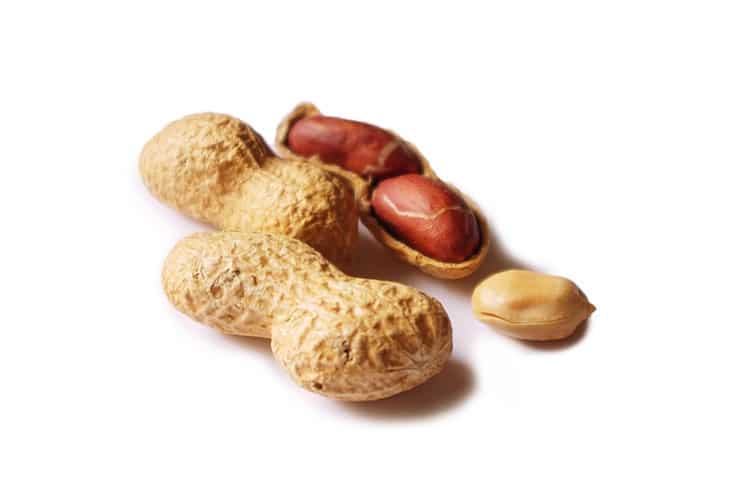
You must surely be confused seeing peanuts on this list, but there is a perfectly sound reason behind this.
First of all, despite the name, peanuts are not a nut but a member of the family of peas. While the hard, roasted form is the most popular, peanuts can also be soft with the right cooking method.
Peanut is special in the way that its taste will change according to the way you process it. The roast form has a sweeter taste, with some hints of meat and chocolate as well as a vegetal undertone. This form can replace cooked chickpeas in roast recipes, as it has the same crispiness.
Boiled peanuts are softer and have a more savory taste, but the firmness is still there. In other words, they share the same firmness as chickpeas, but can enhance the flavor of your dishes. If you are a fan of stews, you will realize that they will be a good chickpea liquid replacement.
Peanuts provide lots of fatty acids for your body, ensuring that you have enough energy for the day. They also offer many antioxidants as well as melt-protected proteins. As a result, your memory and attention span will see some impressive improvements.
8. Hazelnuts

Yes, you read it right; hazelnut can be a replacement for garbanzo beans, but only under specific circumstances. Also known as filberts or cobnuts, these nuts have an oval shape stretching 5/8 inch in length. Its kernel is edible, especially tasty if given a roast beforehand.
Raw hazelnuts have a distinctly nutty flavor, so there is no way that they can be used as a chickpea substitute. They can be quite a good snack, though.
The roasted form, on the other hand, tastes almost the same as roasted chickpea, with a slightly earthy note. For this reason, roasted hazelnut can replace chickpea in desserts like chickpea cookies. You do need to be careful with a nut allergy, though.
There have been studies linking the consumption of hazelnuts with the reduction of inflammatory markers. The reason for this advantage lies in their rich supply of healthy fats, which can eliminate inflammation. Of course, healthy fats are also good at maintaining blood sugar.
9. Lima Beans
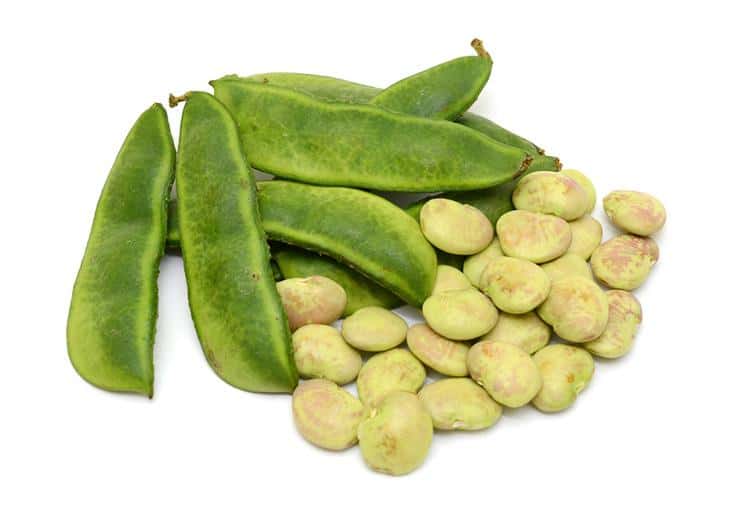
You may also know them as double bean, chad bean, Madagascar bean, or butter bean. There are two origins of this bean type; one is the Mesoamerica region while the other is the Andes.
The Andes bean domestication took place circa 2000 B.C., producing the large-seeded lima variety. On the other hand, the Mesoamerica domestication happened much later, in 800 AD. Its result is the Sieva variation, with smaller seeds.
We will be focusing on the lima bean with its large seeds due to the mild flavor and creamy texture. This combination makes it so that the lima variation can replace chickpea in almost any soup-based dish. It will imbue the dish with an improved milky texture.
Lima beans have an exceptionally high proportion of iron, with 1 cup providing about 1/4 of your daily iron intake. For this reason, they can help tremendously in preventing anemia from iron deficiency. The fiber proportion is also good for avoiding constipation.
10. Navy Beans
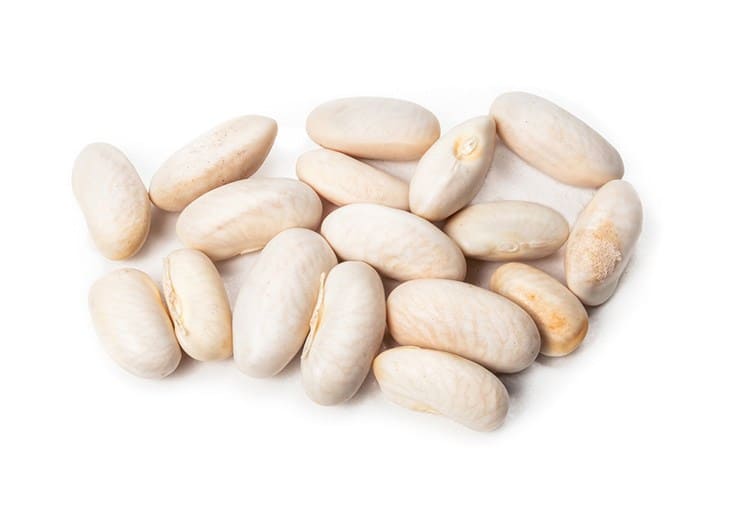
Earning the name due to its connection with the U.S. Navy’s sailor meals, the navy bean has been popular since the 1800s. It has some other names such as pearl haricot bean, white pea bean, Boston bean, and pea bean. The Navy bean was introduced to Australia during World War II.
These beans are generally 0.52 inches long with an oval shape and a creamy white color. Due to this color, people often mistake them with other white bean types like white kidney beans or cannellini beans. The best way to distinguish is based on the size, as navy beans are much smaller.
Once cooked, this bean will turn into a velvety, soft texture with a starchy and creamy feel. As such, they will lose their shape, but that’s not a bad thing. Creative chefs have been utilizing this characteristic of the beans to improve their stews, specifically the Highlander stew.
Navy beans will provide your body a significant amount of fiber, both insoluble and soluble. The soluble fiber interacts with water, forming a gel substance to help with digestion in the colon. The insoluble one will add bulk into the stool, assisting in eliminating gastrointestinal waste.
11. Northern Beans

Hailing from South America, these beans are known more as large white beans. They are generally smaller in size than cannellini beans but bigger than navy beans. Their shape is similar to lima beans, but they will grow 0.69 inches in length once cooked.
The large white beans are incredibly good at maintaining their shape, even if you cook them under pressure. In fact, cooking them under pressure will eliminate their grainy texture. That is why they can do a better job than fresh chickpeas for stock pot recipes like the Italian Sausage and Bean Soup.
One serving of northern beans will supply your body with a high concentration of protein content. That is why lots of vegans pick them as the go-to for their daily protein intake. They also have many nutritional benefits, offering about 500 calories per serving.
12. Black-Eyed Pea
Botanically referred to as Vigna unguiculata, a black-eyed pea belongs to the Fabaceae family. The source of its name comes from the unique black spot on the surface of the pea’s skin. Each black-eyed pea pod has an average length of 2.7 inches, protecting a minimum of 6 slightly curved oval seeds.
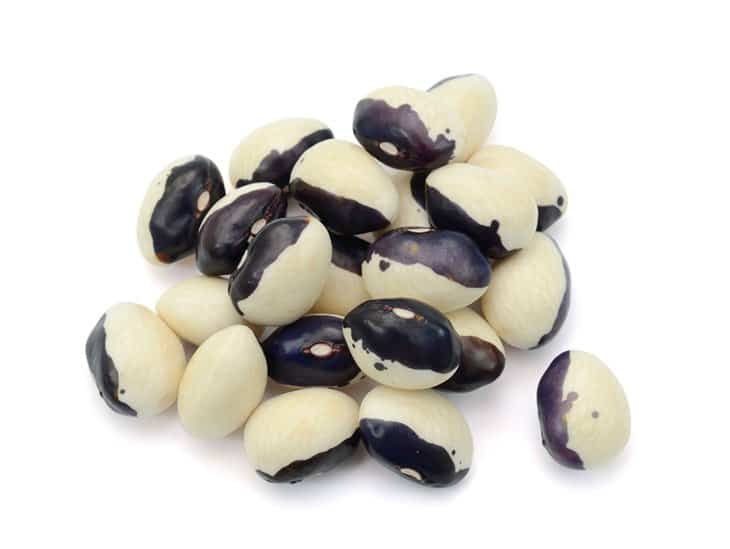
The seeds themselves are taut, plump, and smooth, with the signature black spot signifying the place the seeds were attached to their pod. These seeds have the same beany, starchy taste like chickpeas. However, they are not sweet but a little salty.
That is why we recommend only using them in recipes where chickpeas only serve as a sub-ingredient. For example, you can mix the black-eyed peas instead of garbanzo beans with sautéed greens. There is also the possibility of using black-eyed peas in pasta.
Black-eyed pea will provide your body with vitamin A, which helps to create a substance to maintain the integrity of your skin.
Commonly Asked Questions
Here are some of the most interesting questions that we saw during the research. We hope that you can also find them useful.
Which Do Chickpeas Provide, Protein Or Carb?
The answer is both, as most chickpeas have protein and carb. However, the percentage of protein is usually lower than the percentage of carbs. And it is advisable to look for another ingredient to balance out this disproportion.
Which Ingredient Can Replace Chickpea The Best For Hummus?
Due to Hummus’s incredible emphasis on the consistency of the chickpea, we believe it’s better to use green peas. They are the least different in terms of consistency, and the other hummus ingredients will cover the taste discrepancy.
How To Cook Chickpea Properly?
There are two simple ways to prepare chickpeas. The first one is to soak them for at least 8 hours and then cook them for 2 hours on the stovetop.
Another way is to perform a quick 5 minute boil, then soak them for 1 hour. Finally, cook them on the stove for 2 hours.
Conclusion
Each substitute for garbanzo beans that we mentioned above has a specific situation where it shines the most. A prime example is a peanut, as it is usually not a good choice. However, once it comes to roasted dishes, there is nothing more suitable. All you need to do is find a balance!


